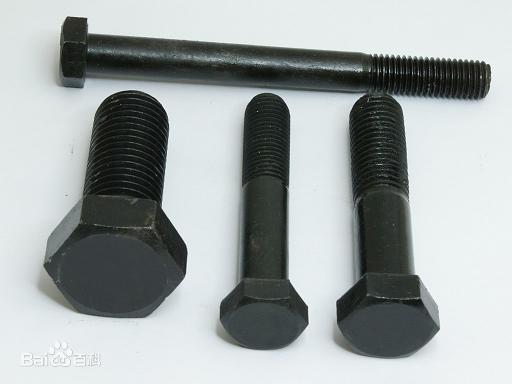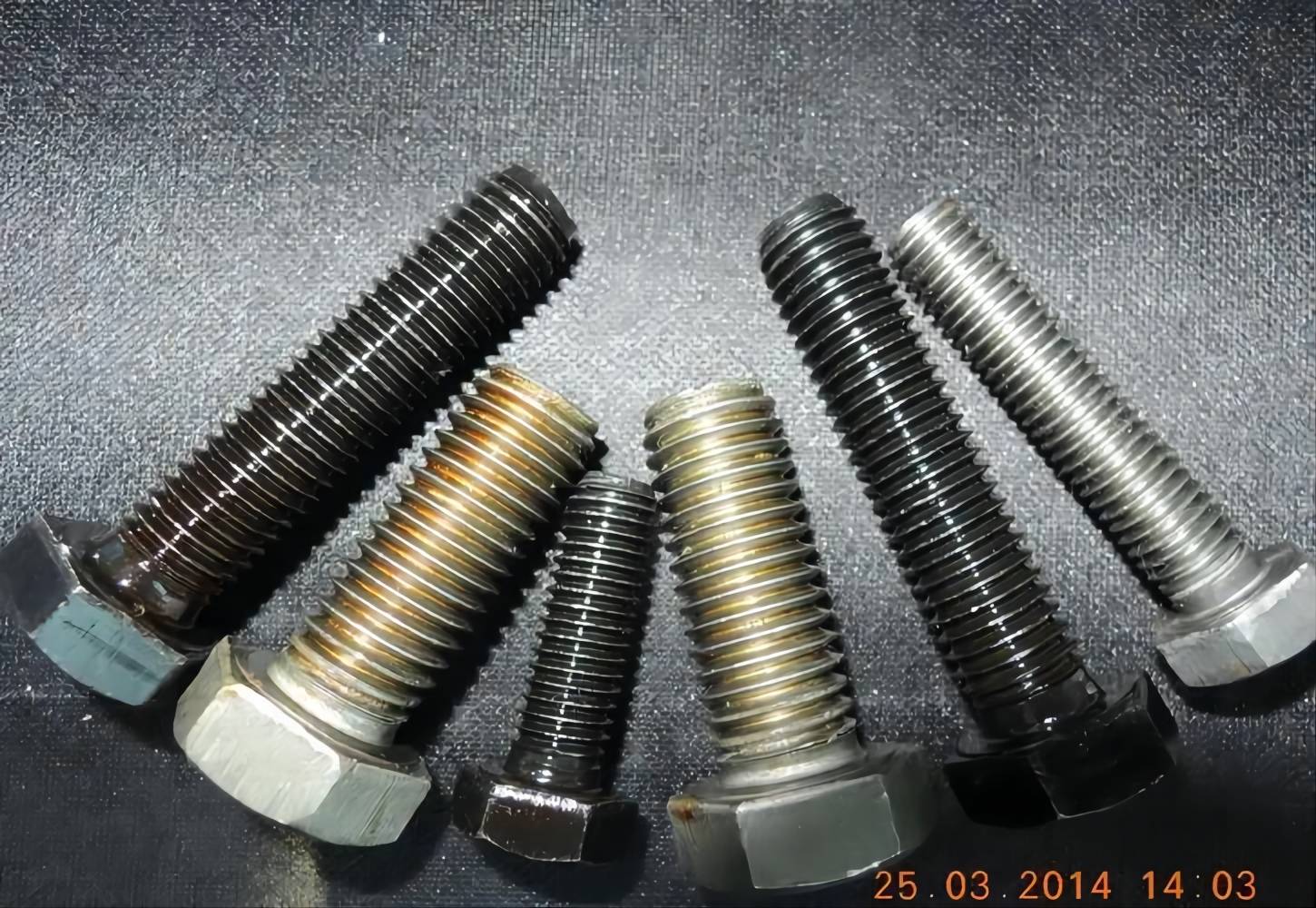- English
- Español
- Português
- русский
- Français
- 日本語
- Deutsch
- tiếng Việt
- Italiano
- Nederlands
- ภาษาไทย
- Polski
- 한국어
- Svenska
- magyar
- Malay
- বাংলা ভাষার
- Dansk
- Suomi
- हिन्दी
- Pilipino
- Türkçe
- Gaeilge
- العربية
- Indonesia
- Norsk
- تمل
- český
- ελληνικά
- український
- Javanese
- فارسی
- தமிழ்
- తెలుగు
- नेपाली
- Burmese
- български
- ລາວ
- Latine
- Қазақша
- Euskal
- Azərbaycan
- Slovenský jazyk
- Македонски
- Lietuvos
- Eesti Keel
- Română
- Slovenski
- मराठी
- Srpski језик
What is the hexagonal bolts
2023-04-15
Hexagonal bolts :
A fastener consisting of a head and a screw. Bolts are divided into iron bolts and stainless steel bolts according to their materials, namely hexagonal head bolts (partial thread)-level C and hexagonal head bolts (full thread)-level C.
Performance class:
Bolts for steel structure connection are classified into more than 10 grades, such as 3.6, 4.6, 4.8, 5.6, 6.8, 8.8, 9.8, 10.9, 12.9 and so on. The bolts of 8.8 grade and above are made of low carbon alloy steel or medium carbon steel and have been heat treated (quenching, tempering), which are generally called high strength bolts, and the rest are generally called ordinary bolts. The bolt performance grade label consists of two parts, which represent the nominal tensile strength value and the flexure ratio of the bolt material respectively. For example:
Bolts of performance Class 4.6 are defined as:
1. Nominal tensile strength of bolt material reaches 400MPa;
2. The bending ratio of bolt material is 0.6;
3, the nominal yield strength of bolt material up to 400×0.6=240MPa
Performance class 10.9 high strength bolt, the material after heat treatment, can reach:
1. Nominal tensile strength of bolt material reaches 1000MPa;
2. The bending ratio of bolt material is 0.9;
3, the nominal yield strength of bolt material up to 1000×0.9=900MPa class
The meaning of bolt performance grade is the international standard, the same performance grade of bolts, regardless of the difference in material and origin, its performance is the same, the design can only choose the performance grade.
The strength grades called Class 8.8 and 10.9 refer to the shear stress grades of the bolts of 8.8GPa and 10.9GPa
Classification:
1. According to the force mode of connection, there are ordinary and hinged holes. The bolts used for reaming holes should match the size of the holes and be used when subjected to transverse forces.
2. According to the head shape, there are hexagonal head, round head, square head, countersunk head, and so on. The general countersunk head is used in the place where the surface of the connection is smooth without protrusion, because the countersunk head can be screwed into the parts. Round heads can also be screwed into parts. The tightening force of the square head can be larger, but the size is large. The hexagonal head is the most commonly used.
In addition, in order to meet the needs of locking after installation, there are holes in the head and the rod part, which can make the bolt not loose when it is vibrating.
Some bolts have no thread to do thin rod, called thin waist bolt. This bolt is good for joints under variable forces.
The steel structure has special high-strength bolts. The head will be bigger. The size will also change.
In addition, there are special uses :T groove bolt, the most used on the fixture, the shape is special, the two sides of the head should be cut off. Anchor bolts are used to connect the machine to the ground. There are many shapes, such as U-shaped bolts, as mentioned above.
A fastener consisting of a head and a screw. Bolts are divided into iron bolts and stainless steel bolts according to their materials, namely hexagonal head bolts (partial thread)-level C and hexagonal head bolts (full thread)-level C.
Performance class:
Bolts for steel structure connection are classified into more than 10 grades, such as 3.6, 4.6, 4.8, 5.6, 6.8, 8.8, 9.8, 10.9, 12.9 and so on. The bolts of 8.8 grade and above are made of low carbon alloy steel or medium carbon steel and have been heat treated (quenching, tempering), which are generally called high strength bolts, and the rest are generally called ordinary bolts. The bolt performance grade label consists of two parts, which represent the nominal tensile strength value and the flexure ratio of the bolt material respectively. For example:
Bolts of performance Class 4.6 are defined as:
1. Nominal tensile strength of bolt material reaches 400MPa;
2. The bending ratio of bolt material is 0.6;
3, the nominal yield strength of bolt material up to 400×0.6=240MPa
Performance class 10.9 high strength bolt, the material after heat treatment, can reach:
1. Nominal tensile strength of bolt material reaches 1000MPa;
2. The bending ratio of bolt material is 0.9;
3, the nominal yield strength of bolt material up to 1000×0.9=900MPa class
The meaning of bolt performance grade is the international standard, the same performance grade of bolts, regardless of the difference in material and origin, its performance is the same, the design can only choose the performance grade.
The strength grades called Class 8.8 and 10.9 refer to the shear stress grades of the bolts of 8.8GPa and 10.9GPa
Classification:
1. According to the force mode of connection, there are ordinary and hinged holes. The bolts used for reaming holes should match the size of the holes and be used when subjected to transverse forces.
2. According to the head shape, there are hexagonal head, round head, square head, countersunk head, and so on. The general countersunk head is used in the place where the surface of the connection is smooth without protrusion, because the countersunk head can be screwed into the parts. Round heads can also be screwed into parts. The tightening force of the square head can be larger, but the size is large. The hexagonal head is the most commonly used.
In addition, in order to meet the needs of locking after installation, there are holes in the head and the rod part, which can make the bolt not loose when it is vibrating.
Some bolts have no thread to do thin rod, called thin waist bolt. This bolt is good for joints under variable forces.
The steel structure has special high-strength bolts. The head will be bigger. The size will also change.
In addition, there are special uses :T groove bolt, the most used on the fixture, the shape is special, the two sides of the head should be cut off. Anchor bolts are used to connect the machine to the ground. There are many shapes, such as U-shaped bolts, as mentioned above.
There are also special studs for welding, with one end threaded and one end not, which can be welded to the parts, and the other side directly screw the nut.





